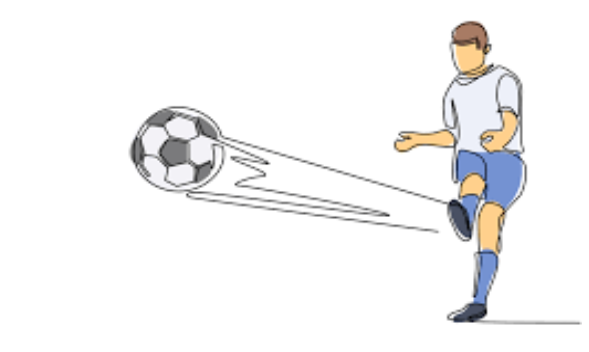Analysing Key Metrics in Football Performance Using Advanced Stats

Football is evolving and clubs are becoming more efficient in making big decisions, such as recruiting a player or sacking a manager. But how and what drives these decisions? Well, Data Football analysts and experts record data from thousands of actions including match and pre-match activities such as training sessions. Clubs use these metrics to develop young talents, pinpoint transfer targets, and match preparations like the pre and post-game debrief.
The use of these sports metrics has also come with several criticisms as experts claim that some traditional ones only show the pitch from a single view. These traditional metrics are outdated so they provide less information about the game in real-time. Below are some latest key metrics in football performance.
Analysing Tactical Football Metrics
Rinus Michels, Johan Cruyff and Man City’s Pep Guardiola are the focal points for the recent changes in the modern game. These changes have led to the introduction of advanced stats to help depict the performance of football teams from large-scale database of soccer tournaments worldwide Some changes introduced include the use of positional play, which heavily relies on retaining possession. The advanced metrics can grouped into:
- In-possession metrics (IP)
- Out of Possession metrics (OOP)
Now, the focus is on occupying each position, while keeping the ball. As Guardiola puts it “I want the ball for 90 minutes. When I don’t have the ball, I go high pressing because I want the ball”.
Advanced In-Possession Metrics

Possession is a vital metric of football, especially for teams that want to exact total control in all phases of the game. However, possession is insufficient, as some teams may retain possession and fail to be productive with it. For instance, in the 2023/2024 season, Brighton and Hove Albion are averaging 62% possession, which is among the highest in the league, but they sit below teams like Tottenham(60%) and Liverpool(59.6%) in the league. In-possession metrics can help in such situations as they measure the possession value of each team. It looks at how teams have converted their chances and become productive with the ball because the major aim is to score a goal.
Expected Goals (XG)
This metric is among the most widely used in football. If a team is in possession they can create big chances that lead to goals. This metric measures the quality of such chances and shots over the quantity. The metric can be ascertained for a whole team or individual players. It considers several factors, such as the type of shots taken, the angle and the distance of the goal. Teams with high XG in Europe’s top 5 leagues include.
| Teams | XG | XGA | XGD | XGD/90 |
| Bayern Munich | 54.3 | 16.0 | 38.3 | +1.92 |
| Barcelona | 51.4 | 25.4 | 26.8 | +1.16 |
| Liverpool | 48.9 | 28.1 | 20.9 | +0.91 |
| Inter | 46.4 | 18.2 | 28.2 | +1.28 |
| Newcastle | 45.5 | 40.3 | 5.2 | 0.23 |
Field Tilt
This metric depicts the territorial dominance of a team. It measures the possession of a team in their opponent’s final third. This shows the attacking threat of the team in possession by looking at the passes and touches the team makes in the opponent’s half. A common example of a team with high field tilt in the premier league is Arsenal.
Goal Conversion%
While other metrics involve complex calculations, this metric uses the team’s total goal and divides it by the total amount of shots taken. It shows the team’s quality in converting their chances and scoring a goal. Some football clubs known for high goal conversion include Brentford with 15.19% in the Premier League and Lazio with 14.81% in the Serie A.
XG on Target
The goal conversion metric focuses on the team’s quality. This metric on the other hand looks at a player’s quality in front of the goal. It considers the position where the shot was taken and the coordinates where the goal is scored. The metric is similar to the XG but considers other factors such as the position where the ball hits the post. If a player’s XG on Target is greater than their XG, it means they are playing high-quality shots in a game.
Shooting Goals Added (SGA)
The SGA is a combination of the XG and XG shots on target. For instance, if a player has a 0.60 XG shot on target from a 0.028 XG, then the player’s SGA is 0.572. It measures the ability of a player to score a low-quality chance in a game. Players with high metrics convert more of their chances than others. In Europe’s top 5 leagues, below is a table of players with the highest Shooting Goals Added.
| Players | Shooting Goals Added in Europe’s Top 5 League |
| Lionel Messi | 9.3 |
| Harry Kane | 6.9 |
| Earling Haaland | 6.0 |
| Robert Lewandowski | 5.7 |
| Lautaro Martinez | 5.5 |
Expected Assist (XA)
Passes and dribbling metrics are necessary because they help clubs in player selection and developing their players. This metric is one of the common passing and dribbling metrics. The Expected Assist shows the player’s ability to create chances on the pitch.
Expected Threat (XT)
This metric is an advanced form of Expected Assist. It measures the quality of players’ passes and dribbles over quantity. Lionel Messi and Kelvin De Bruyne top this list with 5.9 and 4.6 XT.
Advanced Out of Possession Metrics
The Out of Possession metric shows a team’s press to win the ball when they lose it and their defensive actions.
Passes Per Defensive Action (PPDA)
This metric measures the number of passes a defending team in their press allows their opponents to create before they collect the ball.
Build-Up Disruption Percentage(BDP%)
While PPDA measures only the pressing intent of a team, this metric goes further to measure the effect of the press on its opponent.
Gegenpressing Intensity(GPI)
The GPI metric measures a team’s counter-pressing and aggressiveness when they lose the ball. It considers a team’s action in their opponent’s half when they lose the ball in the first 6 seconds.
Conclusion
Football teams use several strategies in the modern era and the only way to know their success rate is by using data such as XG, XA, GPI, and BDP%. Each of these metrics gives you an overall view of your team’s performance.

